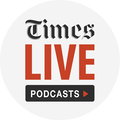
Why state stimulus measures are like (bad) karma
Loading player...
Governments around the world have embarked on the greatest financial experiment of all time. That experiment has been labelled by the media as “stimulus” and involves a mixture of government aid, tax relief, unemployment payments and central bank money manipulation on the grandest scale imaginable.
We’re tripping over the financial crisis can that was kicked down the road in 2008/2009, but instead of addressing the issue of national profligacy, governments are doubling down.
In a recent article for the Financial Mail, Maarten Ackerman, Richard Calland and Mike Law put this recent stimulus at close to $12-trillion, about 8% of global production (SA’s great big stimulus stumble (, August 6). All this state and central bank action is premised on the idea that governments can prime the pump, restart the economy, rekindle the animal spirits and defibrillate the deviation from the business cycle. But can they?
In the US, after the onset of the pandemic the federal government passed laws allocating $2.2-trillion of congressional funds to various aid and fiscal relief packages. This was accompanied by the US Federal Reserve issuing $4-trillion of newly digitised currency in exchange for every imaginable debt the financial markets could muster.
In 12 years the Fed has taken its balance sheet from $1-trillion to $7-trillion, 61% of which comprises US government bonds in some form or other.
In SA, our government was not quite in the same position. There is talk of R500bn “injected” into the economy, 40% in the form of a government promise to stand behind loans issued by private banks. A further R130bn will be reprioritised funds, that is, tax monies re-allocated rather than additionally drawn from the economy. That leaves about R170bn than can be defined as any kind of stimulus.
The perennial question that is never answered is how can be that a country can stimulate itself. By what means can a nation be prodded or cajoled to make more in one financial year than it did in the previous year? Is “stimulus” any kind of meaningful word when applied to nation-state economies?
Since John Maynard Keynes and his general equilibrium equations, economists have proposed policies that view the economy as some kind of machine with levers. From “investment-savings” and ”liquidity preference-money supply” (IS/LM) graphs to dynamic stochastic general equilibrium models, their complexity speaks more to the increase in modern computing power than to any intellectual insight.
They rely on ...
We’re tripping over the financial crisis can that was kicked down the road in 2008/2009, but instead of addressing the issue of national profligacy, governments are doubling down.
In a recent article for the Financial Mail, Maarten Ackerman, Richard Calland and Mike Law put this recent stimulus at close to $12-trillion, about 8% of global production (SA’s great big stimulus stumble (, August 6). All this state and central bank action is premised on the idea that governments can prime the pump, restart the economy, rekindle the animal spirits and defibrillate the deviation from the business cycle. But can they?
In the US, after the onset of the pandemic the federal government passed laws allocating $2.2-trillion of congressional funds to various aid and fiscal relief packages. This was accompanied by the US Federal Reserve issuing $4-trillion of newly digitised currency in exchange for every imaginable debt the financial markets could muster.
In 12 years the Fed has taken its balance sheet from $1-trillion to $7-trillion, 61% of which comprises US government bonds in some form or other.
In SA, our government was not quite in the same position. There is talk of R500bn “injected” into the economy, 40% in the form of a government promise to stand behind loans issued by private banks. A further R130bn will be reprioritised funds, that is, tax monies re-allocated rather than additionally drawn from the economy. That leaves about R170bn than can be defined as any kind of stimulus.
The perennial question that is never answered is how can be that a country can stimulate itself. By what means can a nation be prodded or cajoled to make more in one financial year than it did in the previous year? Is “stimulus” any kind of meaningful word when applied to nation-state economies?
Since John Maynard Keynes and his general equilibrium equations, economists have proposed policies that view the economy as some kind of machine with levers. From “investment-savings” and ”liquidity preference-money supply” (IS/LM) graphs to dynamic stochastic general equilibrium models, their complexity speaks more to the increase in modern computing power than to any intellectual insight.
They rely on ...

